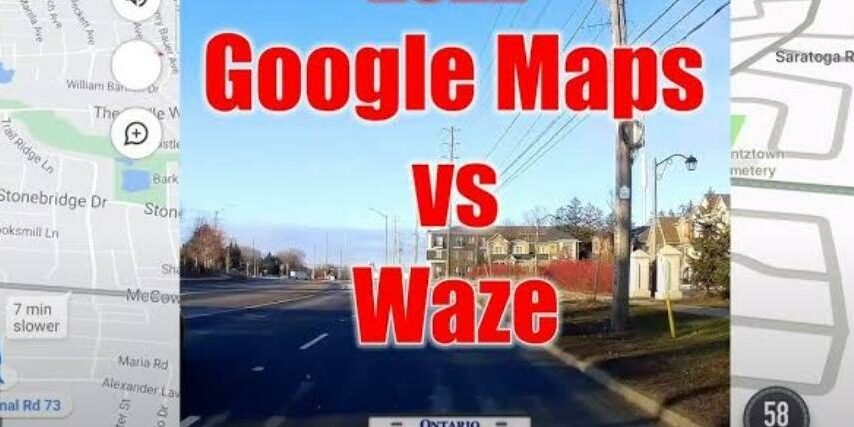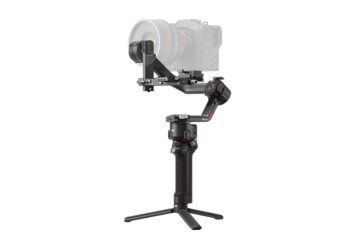Prepare for an exciting voyage into the world of navigational applications! We’ll examine Google Maps vs Waze in this interactive essay. Fasten your seatbelt as we examine their distinctive characteristics, contrast their real-time traffic updates. Let’s explore the fascinating world of turn-by-turn guidance. Join us as we uncover the secrets and determine which app rules supreme in the world of navigation. Whether you’re a seasoned traveler or just looking for the best route for your daily commute. The journey has begun!
Navigate with Ease: Discover the Power of Waze!
Image credit – Waze
Popular GPS navigation tool and crowdsourced mapping platform Waze. It was created by an Israeli business before being bought by Google in 2013. Waze distinguishes itself from other navigation applications. By relying largely on user-generated information and real-time data to provide precise and up-to-date travel instructions.
By reporting traffic conditions, accidents, road dangers, and other situations. They come across while driving, Waze users may actively contribute to the community. Other Waze users are then informed of this information in real-time. Enabling them to modify their routes and avoid any traffic jams or delays.
The app also offers voice-guided instructions, projected arrival times (ETA), turn-by-turn navigation, and alternate routes depending on current traffic conditions. To determine the quickest and most effective routes, it uses information from its engaged user base. As well as information from other sources, such as traffic sensors.
Waze provides a number of features, including suggestions for petrol stations, local parking information, and connection with music streaming services. Additionally, it enables users to communicate with friends and discuss their travel destinations.
Discover the World: Explore with Google Maps!
Image credit – Google
Google created Google Maps, an online mapping service and mobile application. It provides users with detailed maps, satellite images, and street views. Also a variety of location-related information, making for a thorough and dynamic mapping experience.
Users of Google Maps may look up particular locations, landmarks, establishments, and sites of interest. It offers thorough instructions and anticipated trip times based on real-time traffic data. It offers turn-by-turn navigation for driving, walking, bicycling, and public transit. The software also offers voice-guided navigation, which gives users verbal directions to get them where they’re going.
A number of additional capabilities are available in Google Maps in addition to navigation. Users may look up and learn about neighboring businesses, eateries, tourist spots, and reviews. The app offers facts on companies, such as contact information, opening and closing times, photographs, and user-generated material. Additionally, Google Street View, which offers panoramic, street-level views of destinations all around the globe, is integrated with Google Maps.
Google Maps is accessible on a variety of devices, including iOS, Android, and desktop browsers. Due to its enormous coverage, accuracy, and regular updates. It has grown to become one of the most popular mapping services worldwide. The platform is always developing and adding new features. To improve user experience and provide useful data for exploration and navigation.
Navigate Smarter: Waze vs. Google Maps – Which Will Guide You Best?
Although both Waze and Google Maps are well-known navigational tools. There are some significant variations between them in terms of their capabilities, user interfaces, and the underlying data they employ. Here is a Waze vs Google Maps comparison of the two applications in different areas:
1. User UI
Image credit – Tom’s Guide
Waze: Waze features an eye-catching, humorous UI with vibrant colors and iconography. By prominently showing user-contributed warnings, reports, and traffic dangers on the map. It places an emphasis on user-reported data and community participation.
Google Maps: Google Maps features a user-friendly interface that is clear and easy to use. It offers a thorough picture of the map, good navigational guidance, and a number of informational layers.
2. Navigation and directions
Image credit – online tech tips
Waze: Waze is renowned for its real-time traffic updates and flexible rerouting options. To give up-to-date information on accidents, road closures, and other occurrences, it mainly depends on user-generated reports. It offers other routes to prevent traffic jams.
Google Maps: Google Maps delivers precise turn-by,turn instructions and real-time traffic information. To forecast traffic conditions and suggest the quickest routes. It combines historical data, real-time traffic updates, and machine learning algorithms.
3. User Contribution and Community
Waze: Waze places a strong emphasis on community interaction and encourages users to proactively report occurrences, dangers, and police sightings. Users are rewarded via social interactions, accomplishments, and points inside the programme.
Google Maps: Although users may add reviews, images, and revisions to company listings on Google Maps. It lacks Waze’s degree of user engagement and gamification.
4. Extra Features
Waze: Waze has extra features including suggestions for petrol stations, roadside help and connectivity with music streaming applications. Additionally, it offers a carpooling function that enables users to look for and provide rides to other people.
Google Maps: Google Maps provides a broad variety of extra features. Such as Street View, information on public transport, indoor maps, bike directions. Also the option to download maps for offline usage. It connects with other Google products, including Google Photos for location tagging and Google Assistant for voice requests.
5. interaction with Other Platforms
Waze: In comparison to Google Maps, Waze offers less interaction with third-party applications and platforms.
Google Maps: Google Maps users may easily access their Google accounts, search histories, and personalized suggestions. Thanks to Google Maps’ significant connectivity with other Google services.
Therefore, above are the all comparative aspects of Waze vs Google Maps, Continue reading to know more.
How to Navigate using Google Maps?
Image credit – Google for developers
Using Google Maps for navigation:
1. Launch the Google Maps app on your smartphone or go to its website.
2. Select your destination, such as an address, landmark, or company name, and type it into the search box at the top of the screen. As an alternative, you may set a place as your destination by long-pressing on the map.
3. Google Maps will provide you a way to get there. To check the estimated travel time for each route, evaluate the proposed path and touch on the various routes.
4. Click “Start” to launch the navigation. Voice advice and turn-by-turn instructions are offered by Google Maps. Additionally, it will display real-time traffic data and automatically recommend detours in the event of delays.
How to navigate using Waze?
Image credit – engadget
Waze navigation:
1. Launch the Waze app on your phone or tablet.
2. Similar to Google Maps, tap the search box at the top and type in your destination.
3. Using user feedback and current traffic conditions, Waze will provide a route to your location. It could recommend detours to avoid traffic.
4. Press “Go” to launch the navigation. Waze will provide you voice assistance, turn-by-turn instructions, and an anticipated arrival time (ETA). On the basis of user feedback and real-time traffic data, it will also actively change the route.
Both Google Maps and Waze provide extra navigational capabilities. Such as displaying local petrol stations, eateries and tourist attractions along the way. Within the settings for each app, you may change settings, such as avoiding tolls or roads.
It’s important to keep in mind that depending on the device and app versions you are using. The user interfaces and certain functionality may differ somewhat.
Common benefits of Google Maps and Waze?
Users using Google Maps and Waze may take use of the following advantages:
1. Reliable and Current Maps: Both applications provide users access to reliable and current mapping information. Including streets, landmarks, and sites of interest. This guarantees accurate navigation and aids users in quickly reaching their destinations.
2. Turn-by-Turn instructions: Both applications include turn-by-turn instructions that take users from point A to point B of their route. Drivers may maneuver with the use of voice advice without having to glance at the screen continually.
3. Real-time traffic updates: Real-time traffic updates offered by both Google Maps and Waze. It may assist users avoid traffic jams, collisions, and road closures. Based on the circumstances at the time, this function enables users to choose the shortest and most effective routes.
4. Alternative Routes: Both applications provide other routes to the destination in the event of unforeseen traffic or problems. To suggest alternative routes, they analyze traffic data and take into account a number of criteria.
5. Public Transportation alternatives: In many locations, Google Maps offers public transportation navigation. By giving users bus, rail, and other transit alternatives routes, timetables, and directions. Users may use this function to plan their trips utilizing public transit.
6. Search & Discovery: Users may search for particular locations, companies, landmarks, and areas of interest using both applications. Users may quickly locate local dining options, petrol stations, lodging options, and other services.
7. Offline Maps: Users may download maps and access them without an internet connection using Google Maps and Waze. Both provide offline map features. When visiting places with little or nonexistent network connectivity, this is helpful.
8. Integration with Other Services: Both applications include a number of other service integrations. They can work along with ride-hailing services to provide easy access to scheduling trips. As well as music streaming applications to manage playing while navigating.
Frequently asked questions
1. Can I use Waze or Google Maps to get directions while walking or riding a bike?
A: Yes, both Waze and Google Maps include instructions for biking, walking, and other non-driving activities. By choosing the proper mode of transportation when entering your location. Or by changing the app’s settings, you may swap between various modes.
2. Do I need an internet connection in order to use Waze or Google Maps?
A: Both applications provide offline map capability, even though they largely depend on an internet connection for real-time updates. For a certain region, you may download maps in advance, and without an online connection. You can still use basic navigation (without real-time updates).
3. Can I use Google Maps or Waze with voice commands?
A: Voice commands are supported by both applications. To begin navigation, look up destinations, and carry out other actions within the applications, utilize voice commands. Simply speak your requests into the voice assistant on your smartphone.
4. Can I change the settings in Waze or Google Maps?
A: Both applications provide customization choices. You may modify parameters like avoiding tolls or highways, and picking the quickest or shortest routes. Also choose your preferred voice guiding options, and more. Each app has a settings menu that you may explore to customize your experience.
5. Do Google Maps and Waze work on every platform?
A: Google Maps and Waze are both accessible across several platforms. On desktops or laptops, web browsers may be used to access them. Additionally, you may download the applications from their respective app stores for Android and iOS devices.
Conclusion
The competition between Google Maps vs Waze has captured the attention of users all around the world. The world of navigation applications is a dynamic and always-changing scene. While both applications provide excellent features. Like precise maps, step-by-step instructions, and real-time traffic reports, each has its own particular advantages. Whether you favor Google Maps’ full capabilities or Waze’s community-driven experience, one thing is certain: these applications have revolutionized how we travel, making our trips easier and more effective than ever. So, before you go out on your next road trip or urban expedition. Pick your guide carefully and let the adventures begin. Travel safely!








